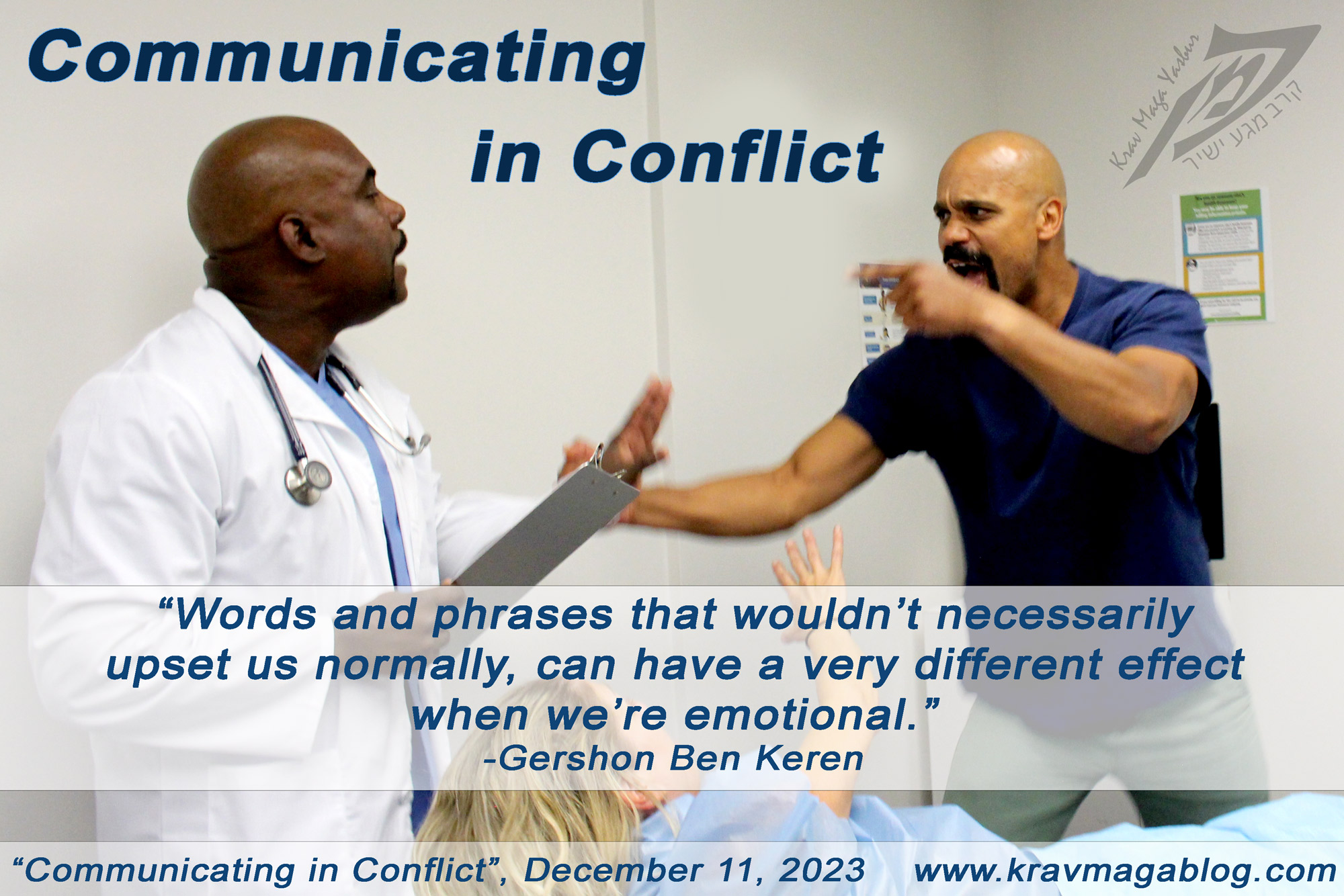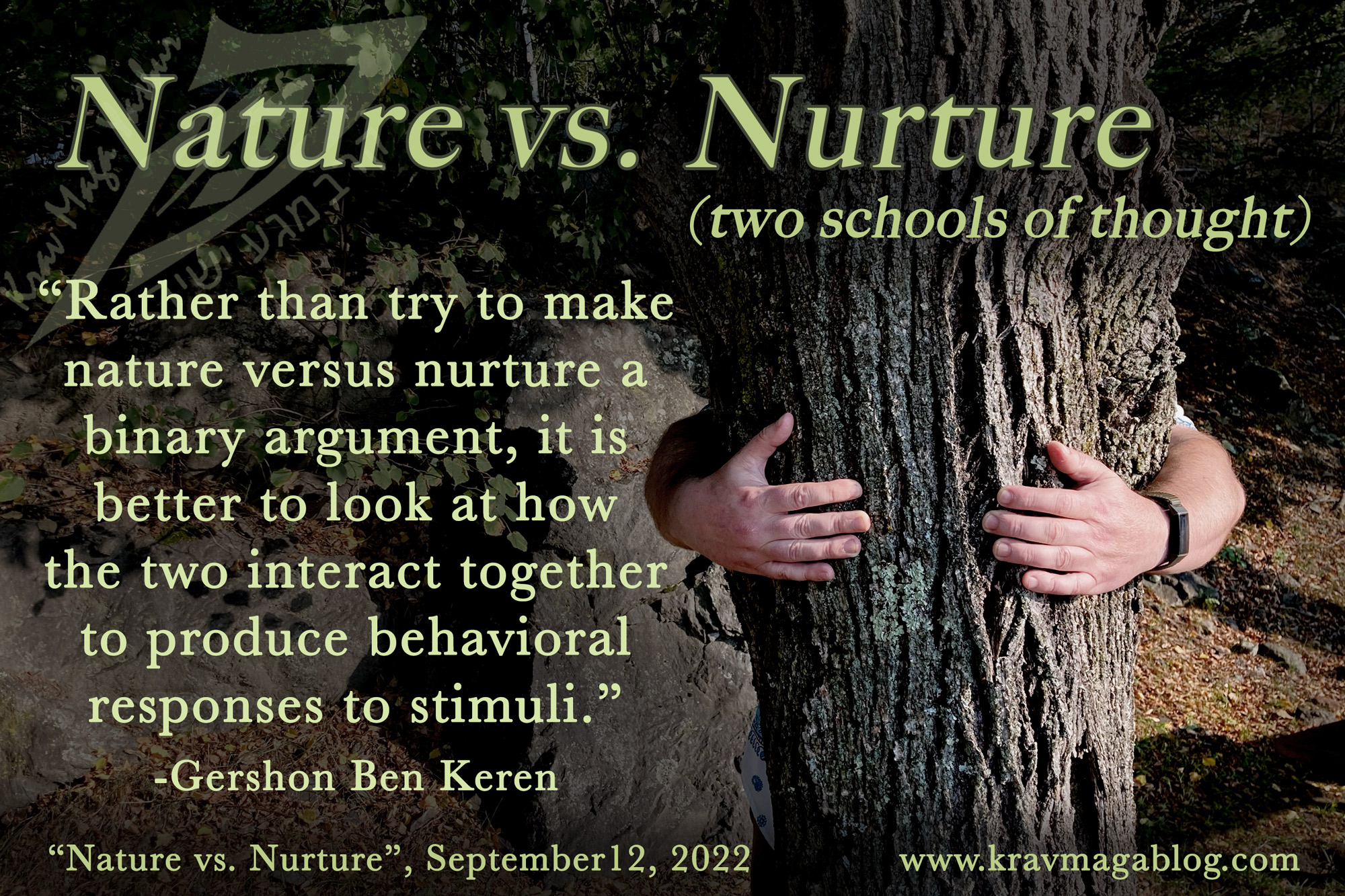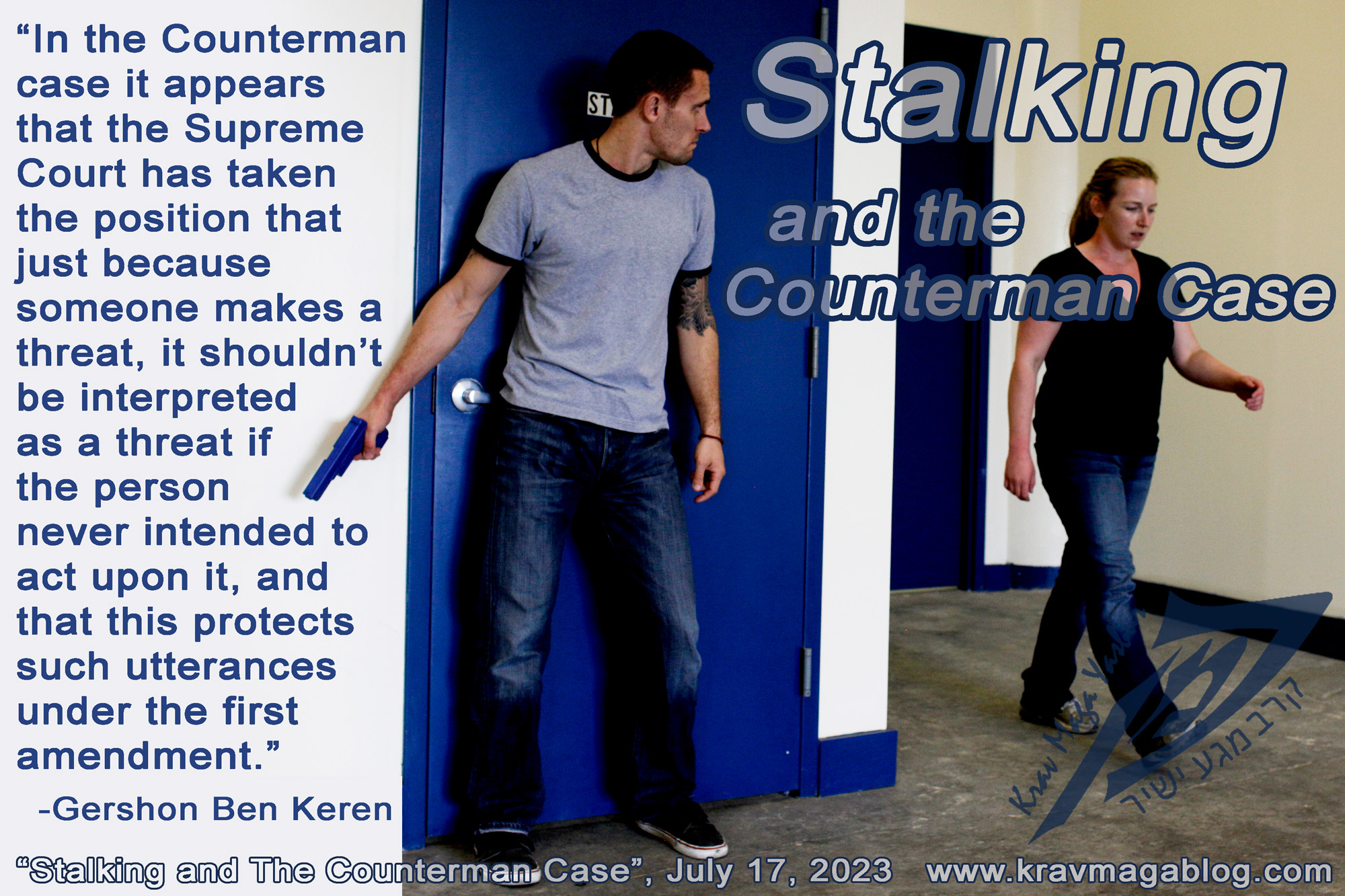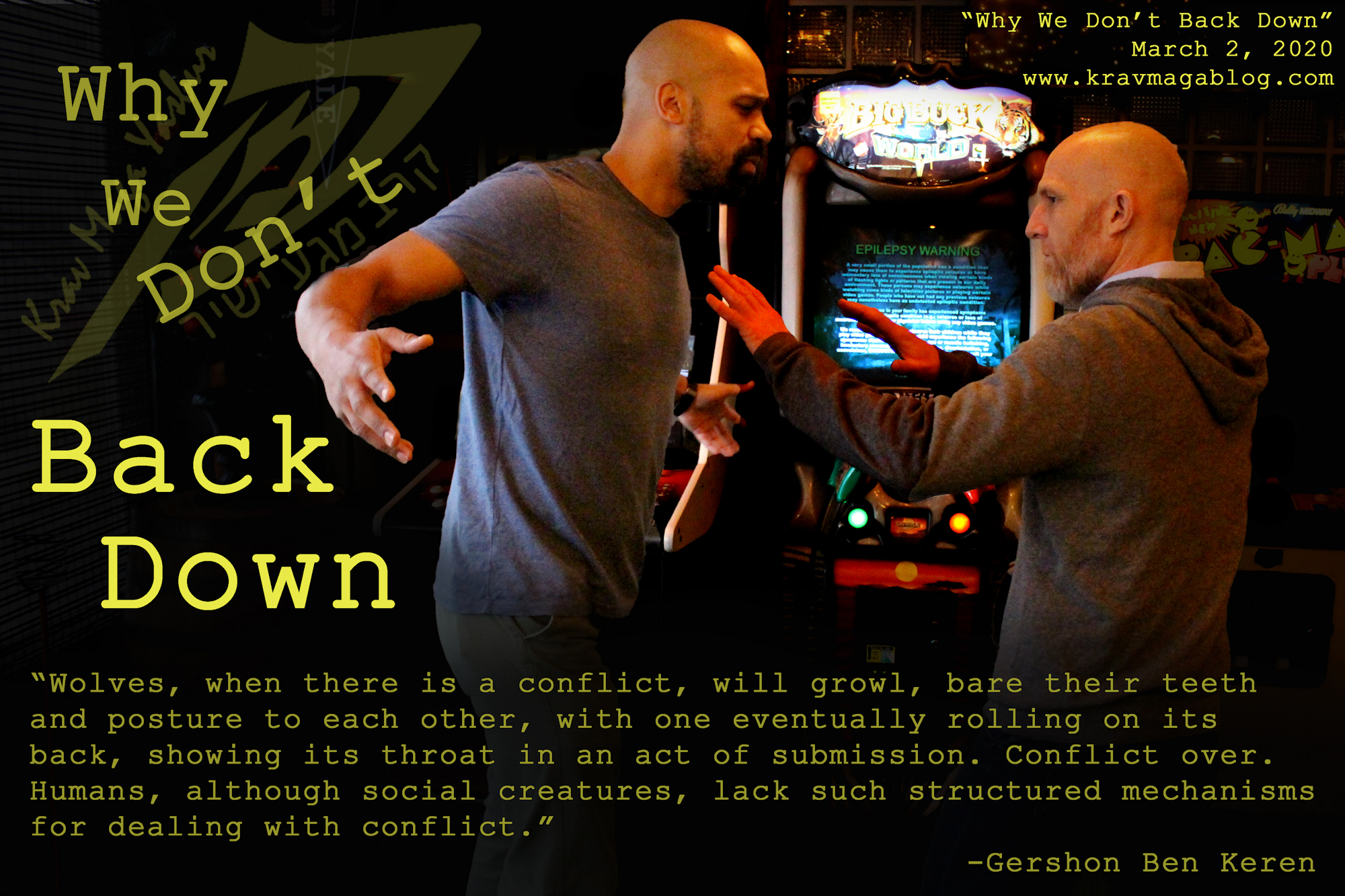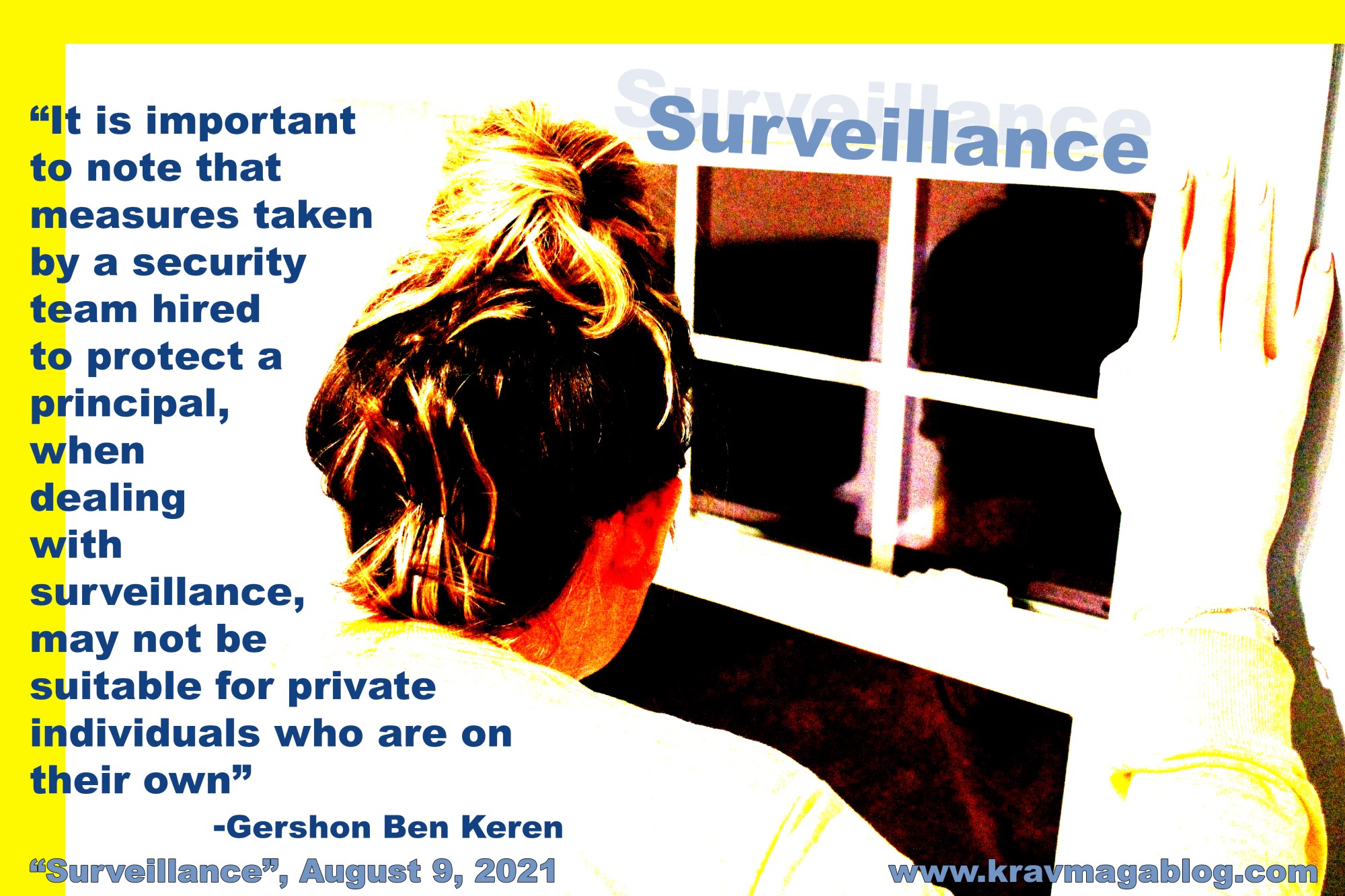Surveillance, is an article written by Gershon Ben Keren, a 5th Degree Black Belt in Krav Maga, who teaches Krav Maga in Boston, MA. He has also authored three Amazon best-Selling Books on Krav Maga.
Surveillance involves the gathering of information that a principal/person would not voluntarily give. It is the third step in a predator’s process, which is preceded by target search and target selection (the previous two articles, from this blog, talk about these things). It is important to note that measures taken by a security team hired to protect a principal, when dealing with surveillance, may not be suitable for private individuals who are on their own e.g., a team in a vehicle who believes they could be being followed may drive to a less populated area/destination, that would be unlikely for people to go to, in order to either lose car behind them (in most cases a surveillance team would rather lose command/sight of the principal’s vehicle rather than risk detection), or confirm that they are being targeted etc. It would be irresponsible to suggest that a lone driver, driving to work, employ such a tactic if they believed they were being followed, as driving to a deserted – and probably unfamiliar place – might give a predatory individual an opportunity to gain access to them that would otherwise be denied. I have had conversations with people who proudly tell me that they change their route to and from work every day, but leave their house and arrive at work, at roughly the same time each day, presenting a predictable pickup point and time etc. For most people changing their route in this way isn’t a measure that is likely to increase their safety by any substantial degree (especially if they don’t have a good memory concerning the cars that they encounter along the routes they take) and is an unnecessary hassle. It’s easy to fall into the trap of thinking you’re Jason Bourne, believing that there are tenacious and sophisticated teams of individuals who have harmful intent towards you. In this article I want to look at what surveillance realistically looks like from an everyday crime prevention perspective.
Most offender surveillance of a potential target isn’t sophisticated, and is often used to confirm victim suitability i.e., has the offender selected the right target, such as somebody who they believe will comply with their demands and/or is unlikely to fight back etc. This is not likely to take much time, especially if the offense being committed is a petty crime such as a street robbery, where the monetary reward might be quite small. Surveillance will also occur within the environment, to check for the absence of capable guardians, such as “place managers” whose presence discourages crime/violence e.g., a bar/pub manager who is capable of breaking up fights etc. It has been found that it is the absence of good place managers, rather than neighborhood type/location, which explains why some bars and clubs experience high levels of crime and violence, whereas other don’t, even when they exist in close proximity. A cleaner or janitor who is responsible for keeping a particular location/area clean can also act as a place manager, in that although they might not be seen as being physically capable of intervening and preventing an offense from being committed, the fact that they may be able to act as a reliable witness could see their presence deter crime – overflowing trash cans at the end of a train station could indicate the absence of such a place manager. Offender surveillance may also involve checking for CCTV cameras, however research has shown that where acts of violence are concerned the presence of cameras is unlikely to deter someone. That said, a number of highly visible cameras does appear to reduce vehicle crime in an area, so this may be something to consider when choosing where to park your car etc. If someone who seems to have an interest in you (they keep glancing at you, and then looking away etc.), starts looking up as well as around, they may be checking for cameras. This process of scanning may also involve the search for an escape route.
The question now is what should you do when you identify somebody who is carrying out surveillance on you? In most cases acknowledging the fact – as you make your way to a safe place, such as a location that is well populated, and that has a visible place manager(s) – is your best course of action. If someone knows you are aware of their presence and interest in you, and is confident enough to let them know this, you are in most situations less likely to be victimized than if you appear to be unaware. Most predatorial individuals rely on speed and surprise when they strike, whether it is forcing you to comply with a demand/threat they make, or engaging in a physical attack. Most understand that once they engage in their offense, those that they target rarely catch up in their decision-making (do you or don’t you hand over your wallet to a mugger), or in their physical response. Letting a potential assailant know that you are aware of them (in a non-challenging manner), demonstrates that you are, to one degree or another, able to think about how you should respond. It may be that an assailant brings their attack/strike phase forward because of this, however that means that they would now be playing catch up. In most instances - unless a predator believes that despite being detected, everything is still in their favor - they are most likely to wait for another target/opportunity. Once again it is worth noting that most violent crimes (and crimes in general) are opportunistic and rely on certain conditions – such as a target’s lack of awareness – being met. All crime is to some degree “on the clock” and so offenders who are forced to rush, and work on a target’s timeline are more likely (regarding the type of violent offense), to switch targets. Once again, this is not a movie, where your job/responsibility is to lure your potential assailant away to another location where you will then turn on them etc. Moving/getting to safety is your priority.
For most of us, the types of violent crimes we’ll be selected for are opportunistic and unsophisticated, and offenders will be prepared to switch targets, if the individual/asset they originally selected is going to cause them problems. Most offenders are looking for the easiest opportunity, and if we can let them know that we are aware of the process they are engaged in, then that awareness has a good chance of deterring them from victimizing us.
0 COMMENTS
